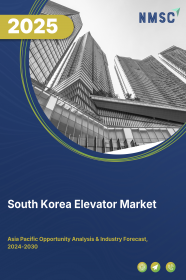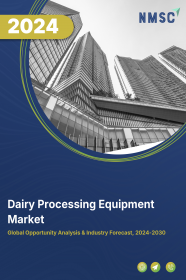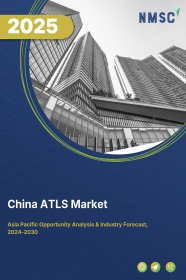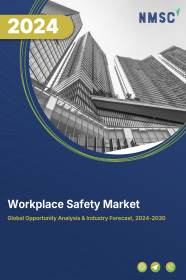
South Korea Elevator Market by Type (Passenger elevator, Freight elevator and Others), by Technology (Traction and Hydraulic), by Service (New Installation, Maintenance and Modernization), by Capacity (Less than 1500 kg, 1500 to 2500 kg, 2501 to 4000 kg and More than 4000 kg) by Speed (Less than 1 M/S, Between 1 to 4 M/S and More than 5 M/S), by Deck type (Single Deck and Double Deck) and Others- Opportunity Analysis and Industry Forecast, 2024 –2030
Industry: Construction & Manufacturing | Publish Date: 15-Feb-2025 | No of Pages: 129 | No. of Tables: 95 | No. of Figures: 60 | Format: PDF | Report Code : CM1656
US Tariff Impact on South Korea Elevator Market
Trump Tariffs Are Reshaping Global Business
Market Definition
South Korea Elevator Market size was valued at USD 1.46 billion in 2023, and is predicted to reach USD 2.97 billion by 2030, at a CAGR of 9.5 % from 2024 to 2030. The elevator market embodies a vibrant sector that encompasses the conception, production, installation, and upkeep of elevator systems. Ranging from traditional traction elevators to state-of-the-art smart solutions, this market presents a diverse range of vertical transportation options tailored to meet the unique needs of various buildings and infrastructure projects. Key players within the elevator market include manufacturers, suppliers, contractors, architects, building proprietors, and facility managers.
Manufacturers persistently innovate to elevate elevator performance, safety standards, and sustainability practices, while suppliers furnish essential components and materials essential for system assembly. Moreover, sustainability considerations, such as energy efficiency and material recyclability, are increasingly integrated into elevator design and operation, aligning with broader environmental goals and sustainable building principles. Consequently, the elevator market stands as a pivotal pillar of vertical mobility, enhancing functionality, accessibility, and sustainability across buildings and urban environments worldwide
Technological Advancements within the Region Drives the Growth of the Market
South Korea's advanced technology sector contributes to the development of cutting-edge elevator systems with enhanced safety features and smart technologies, thereby propelling the growth of the market. This, in turn, attracts domestic and international customers. For instance, in February 2021, Hyundai elevator Co., Ltd. launched the N:EX elevator. The smart product is equipped with contactless technology, which smartphones can use to track movements and can be called without pressing a button.
Moreover, the aging infrastructure in many buildings prompts elevator modernization and refurbishment. This, in turn, provides opportunities for manufacturers and service providers to offer maintenance, repair, and modernization solutions. Collectively, these factors contribute to the expansion of the elevator market in South Korea.
Rapid Urbanization is Fuelling the Growth of the Market
The increasing concentration of people in urban areas has sparked a surge in demand for vertical transportation solutions. As of 2022, around 81.4% of South Korea's population resided in urban centers. This trend has been accompanied by the expansion of cities, leading to the construction of high-rise buildings, commercial complexes, and residential towers. Consequently, the need for elevators has become more pronounced, as they play a crucial role in facilitating mobility and accessibility within modern urban environments.
The High Initial Coast Impedes the Market Growth
The substantial expenses associated with the installation, maintenance, and enhancement of elevators pose barriers to market expansion. Starting from the initial installation costs to the continuous maintenance charges and the need for upgrades to meet safety regulations and enhance energy efficiency, building owners encounter significant financial challenges. These obstacles are particularly formidable for owners situated in economically disadvantaged regions or within aging buildings. Consequently, the heightened costs related to elevators impede market growth across various regions.
The Integration of Artificial Intelligence (AI) Into elevators is Anticipated to Create Future Opportunities for the Market
The integration of AI-driven predictive maintenance into the elevator sector presents a compelling prospect, revolutionizing maintenance and operational procedures through AI advancements. By analysing data gleaned from elevator sensors, AI algorithms can predict maintenance requirements in advance, minimizing downtime and maximizing elevator uptime. This proactive strategy not only prolongs the lifespan of elevator components but also improves safety by anticipating unforeseen breakdowns and optimizing resource distribution, leading to substantial cost reductions for elevator companies. Additionally, well-maintained elevators heighten user satisfaction, thereby elevating the overall experience for building occupants and visitors. Approval AI-driven predictive maintenance empowers elevator firms to stay competitive and uphold service excellence in an ever-changing market landscape.
Competitive Landscape
The South Korea elevator market comprises various market players, such as Otis Elevator Company, TK Elevator (TKE), HM Elevator, Fujitec Co. Ltd, Hyundai elevator Co. Ltd, Mitsubishi Electric Corporation, Toshiba Corporation, Wittur , GYG Elevator, SILVER Elevator Korea Co., Ltd and others.
South Korea Elevator Market Key Segments
By Type
-
Passenger elevator
-
Freight elevator
-
Others
By Technology
-
Traction
-
Machine Room [MR] Traction
-
Machine Roomless [MRL] Traction
-
-
Hydraulic
By Service
-
New Installation
-
Maintenance
-
Modernization
By Capacity
-
Less than 1500 kg
-
1500 to 2500 kg
-
2501 to 4000 kg
-
More than 4000 kg
By Speed
-
Less than 1 M/S
-
Between 1 to 4 M/S
-
More than 5 M/S
By Deck Type
-
Single Deck
-
Double Deck
By Designation Control
-
Smart
-
Conventional
By Door Type
-
Automatic
-
Manual
By Application
-
Residential
-
Commercial
-
Industrial
REPORT SCOPE AND SEGMENTATION:
|
Parameters |
Details |
|
Market Size in 2023 |
USD 1.46 Billion |
|
Revenue Forecast in 2030 |
USD 2.97 Billion |
|
Growth Rate |
CAGR of 9.5 % from 2024 to 2030 |
|
Analysis Period |
2023–2030 |
|
Base Year Considered |
2023 |
|
Forecast Period |
2024–2030 |
|
Market Size Estimation |
Billion (USD) |
|
Growth Factors |
|
|
Companies Profiled |
10 |
|
Market Share |
Available for 10 companies |
|
Customization Scope |
Free customization (equivalent up to 80 working hours of analysts) after purchase. Addition or alteration to country, regional, and segment scope. |
|
Pricing and Purchase Options |
Avail customized purchase options to meet your exact research needs. |
KEY PLAYERS
-
Otis Elevator Company
-
TK Elevator (TKE)
-
HM Elevator
-
Fujitec Co. Ltd
-
Hyundai elevator Co. Ltd
-
Mitsubishi Electric Corporation
-
Toshiba Corporation
-
Wittur
-
GYG Elevator
-
SILVER Elevator Korea Co., Ltd

















 Speak to Our Analyst
Speak to Our Analyst




















